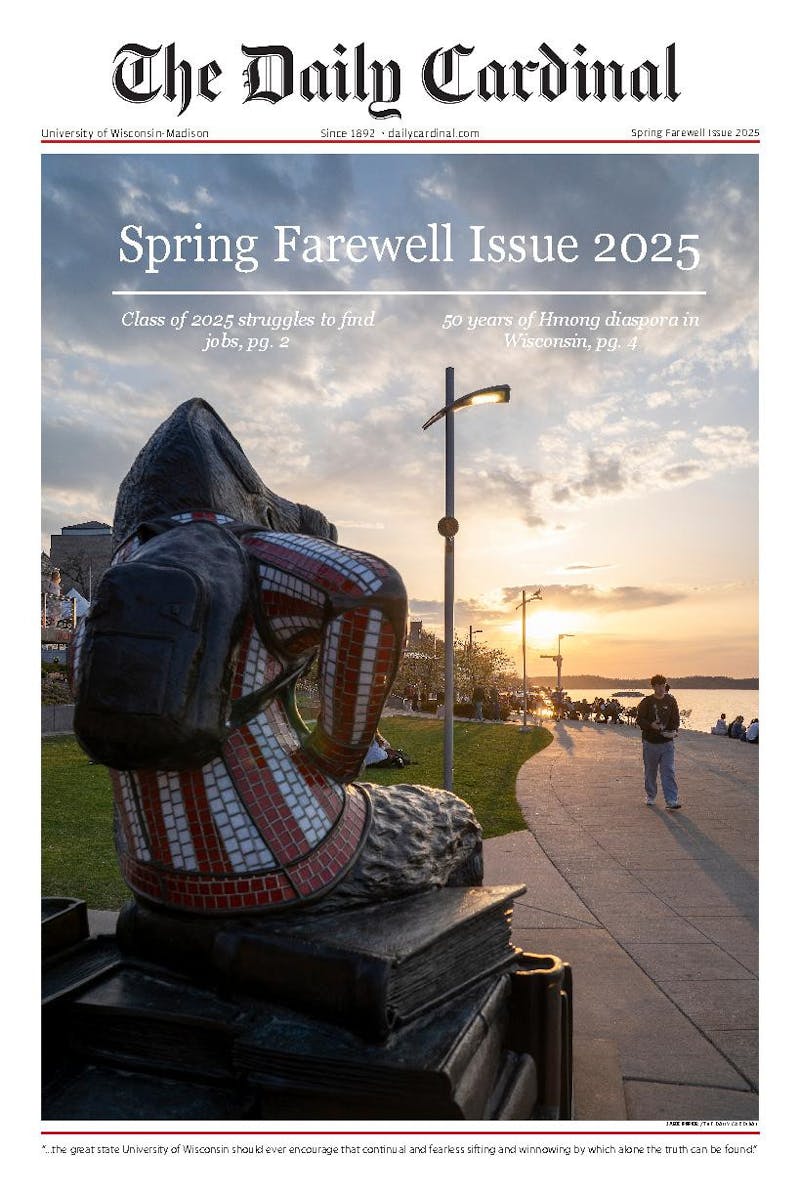The low-wattage coverage of state politics makes it difficult for state issues to find the spotlight on campus. Even though students might speak of politics with an idealist's tongue, they are no different from other citizens in that they pay the most attention to state affairs when their own interests are at stake. Not all issues that warrant student interest are as obvious as tuition. Often state issues peripheral to student life have the potential not just to affect students, but to harm them. Such is the case with the Voter ID Bill as well.
When boiled down to basics, voter identification is a proposal that requires all voters to present a current photo identification when registering at the polls. The impetus behind the voter identification debate is the alleged \massive"" voter fraud that took place in the Nov. 2004 election. The extent to which voting violations were massive is subject to partisan debate. In Madison, for instance, there were just 105 confirmed cases of voting irregularities, but in Milwaukee, as much as 4 percent of the total votes cast are ""questionable."" Last month Gov. Doyle vetoed a proposed voter ID law for the third time, claiming the bill would disenfranchise some 177,000 residents who would have trouble obtaining identification. As a result, Republican legislators have vowed to settle the matter with a constitutional referendum.
The Voter ID Bill has proved to be so contentious because the issue brings two fundamental beliefs of democracy to an intersection-the belief that the right to vote should be ensured at all costs, as should the belief of equality at the polls, the idea of one person, one vote. Voter ID is a good idea. Twenty states currently have voter ID laws on the books, including liberal bastions like New York and Illinois, and 25 states currently have a voter ID law in the works. Even in Alabama, fears of disenfranchisement proved hollow as voter turnout increased by 6.5 percent after the law was enacted. The thrice-revised Wisconsin Senate Bill 42 even exempted anyone in a living-assisted community and promised free IDs for those who couldn't afford them. In principle, students have little to fear from voter ID, but the same can't be said about the particulars of the bill.
The trouble with SB 42 is that the definition of photo identification is severely limited. The proposal would require voters to show a state photo ID with their current address, which means that students would have to get a new Wisconsin ID every time they moved. About 20 perent of Americans moves every year, but that number is nothing when compared to the nomadic lifestyles of students. To be in Madison on August 15 is to realize the folly of this bill. Even students who move from the third floor of Sellery to the fourth would have to go get a new ID if they wished to vote in Madison. The bill is simply disastrous for students, as at a minimum of every two years the vast majority of the student population would be scrambling for last minute IDs. Of the 20 states that have passed a voter identification bill only South Carolina has a stricter bill than SB 42. The implications are obvious-if this bill was signed into law the student turnout in Wisconsin, the second highest in the nation, would plummet.
A more sensible approach was that of Sen. Russell Decker, D-Weston. He championed a bill that would still require voters to show identification before they could vote, but the provisions of what constitutes a state ID are much more student friendly. Under the bill, the definition of an ID is expanded to include a passport or military ID but most importantly a voter could bring in an official document like a bank statement to verify his or her current address. A voter could then be asked to give the last four digits of their social security number to further verify the data. Sen. Decker's compromise deserves support because it will make students feel more confident at the polls without making it hassle to get there.





